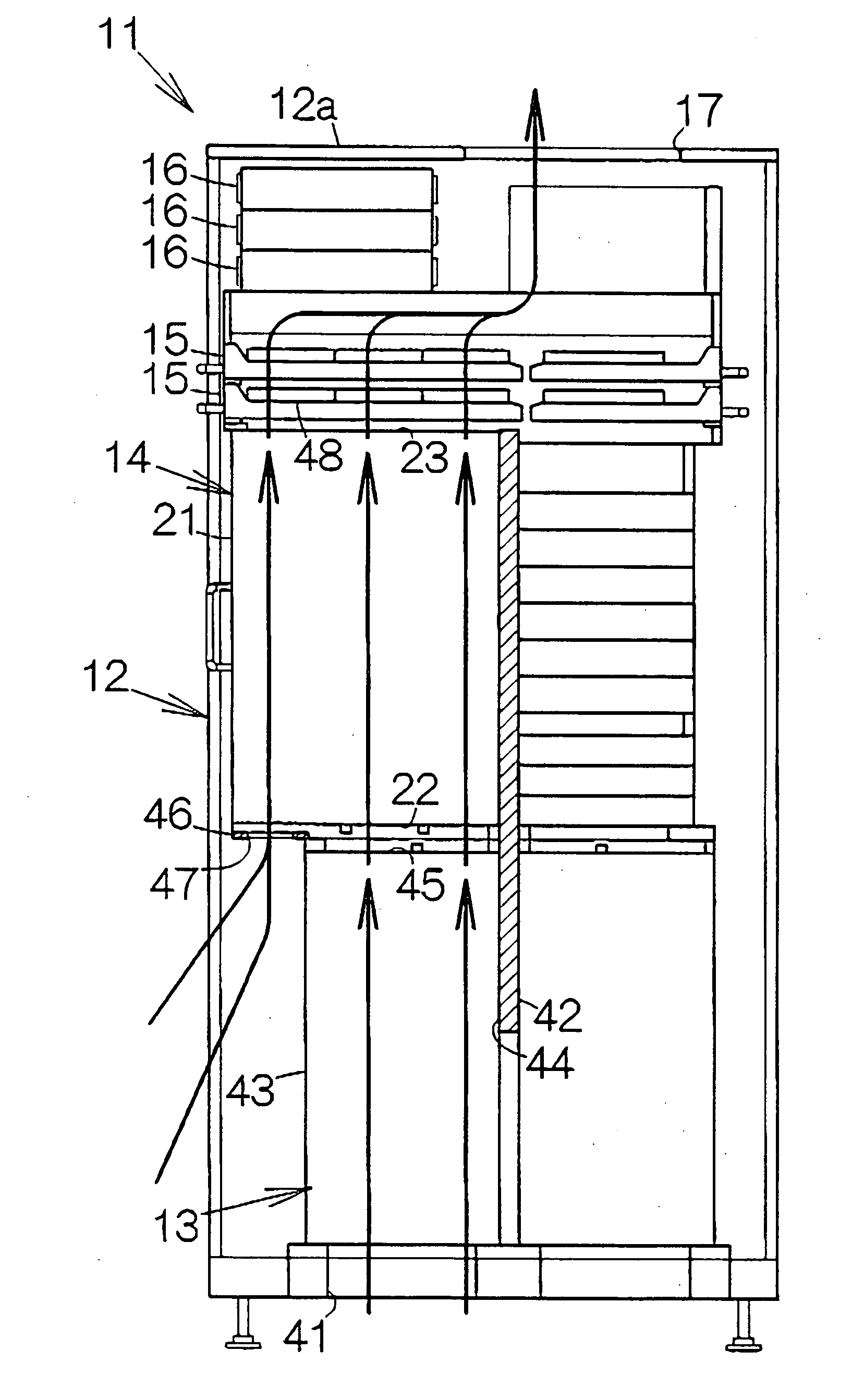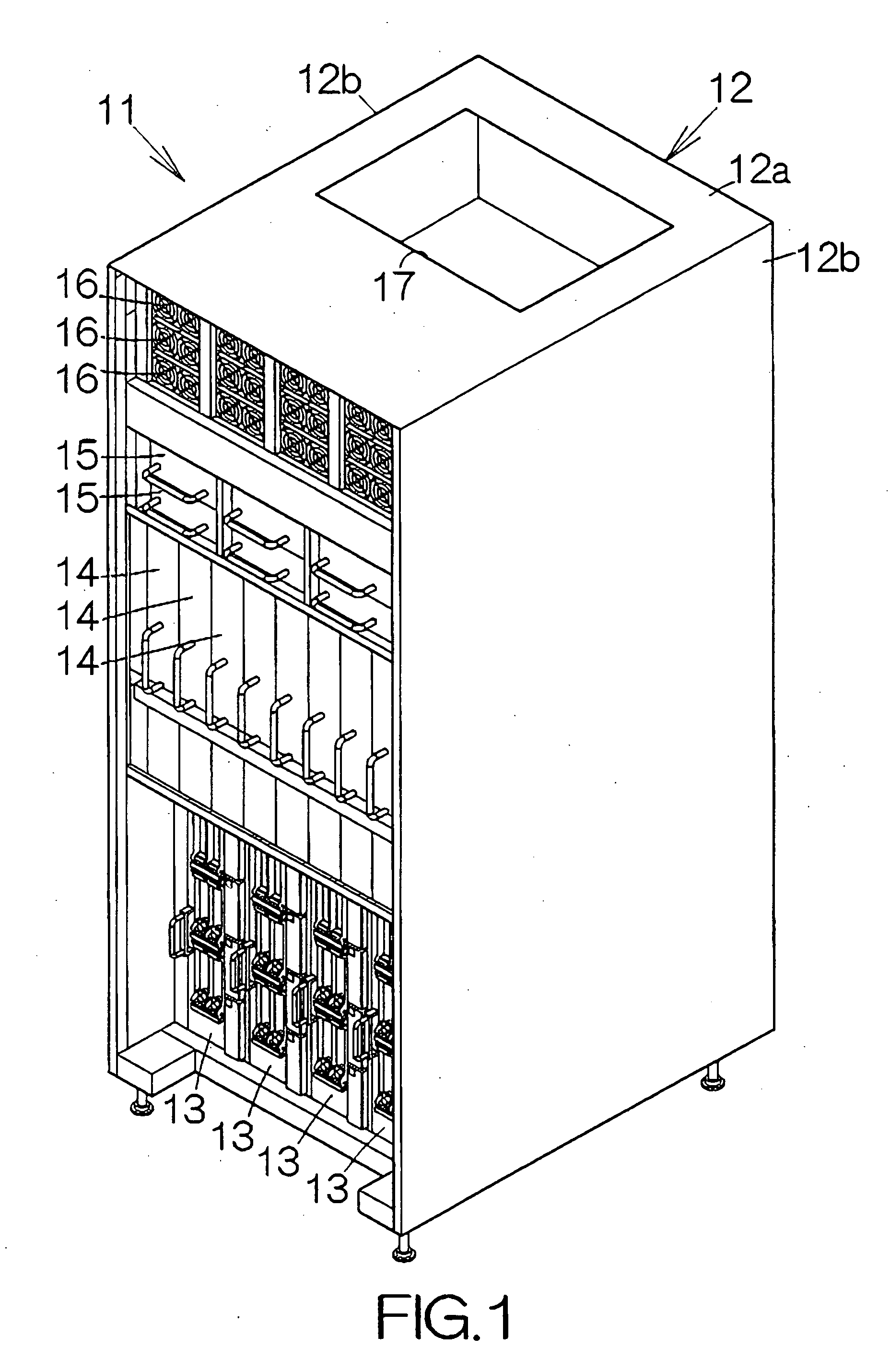Electronic apparatus
a technology of electronic equipment and acoustic power supply, which is applied in the direction of lighting and heating equipment, electric equipment casings/cabinets/drawers, instruments, etc., can solve the problems of increasing the size of the server computer, no airflow to run into the space behind the wall member, etc., and achieve the effect of reducing the siz
- Summary
- Abstract
- Description
- Claims
- Application Information
AI Technical Summary
Benefits of technology
Problems solved by technology
Method used
Image
Examples
Embodiment Construction
[0021]FIG. 1 schematically illustrates a server computer 11 as a specific example of an electronic apparatus according to the present invention. The server computer 11 includes an enclosure 12. Four input / output units 13 are mounted on the bottom rack of the enclosure 12, for example. The input / output units 13 are arranged in parallel with one another. The input / output units 13 are individually coupled to a back panel placed within the enclosure 12 as described later in detail.
[0022] Eight system board units 14 are mounted on the middle rack of the enclosure 12, for example. The system board units 14 are arranged in parallel with one another. The system board units 14 are individually coupled to the back panel in the same manner as the input / output units 13. The system board units 14 have dimensions larger than that of the input / output units 13.
[0023] Fan units 15 are mounted on the upper rack of the enclosure 12. The individual fan unit 15 includes axial flow fans, for example. R...
PUM
 Login to View More
Login to View More Abstract
Description
Claims
Application Information
 Login to View More
Login to View More - R&D
- Intellectual Property
- Life Sciences
- Materials
- Tech Scout
- Unparalleled Data Quality
- Higher Quality Content
- 60% Fewer Hallucinations
Browse by: Latest US Patents, China's latest patents, Technical Efficacy Thesaurus, Application Domain, Technology Topic, Popular Technical Reports.
© 2025 PatSnap. All rights reserved.Legal|Privacy policy|Modern Slavery Act Transparency Statement|Sitemap|About US| Contact US: help@patsnap.com



